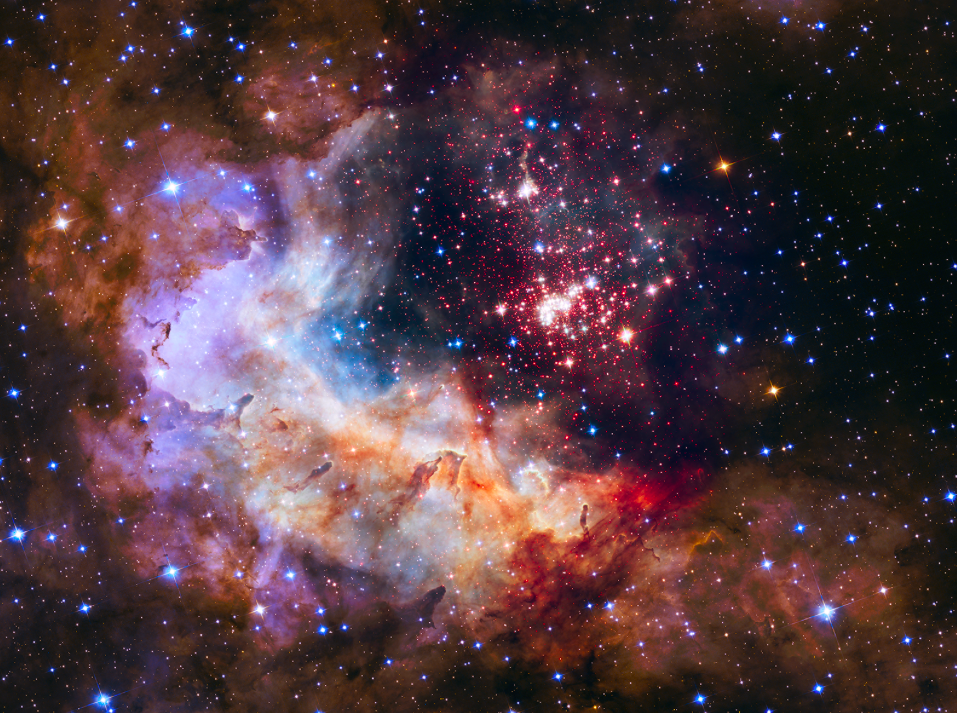WASHINGTON — In a little more than three years, the James Webb Space Telescope will succeed the famous Hubble Space Telescope with instruments that can look deeper into space than ever before. But Hubble isn’t going anywhere, at least according to the NASA team that gathered to celebrate the telescope’s 25th anniversary on Wednesday.
To commemorate the day, NASA also released a Hubble photograph of Westerlund 2, a cluster of 3,000 brilliant stars wreathed in glowing ionized gas. The glittering cluster is located some 20,000 light-years from Earth and stretches from six to 13 light-years across.
The stunning new image is in the vein of other pictures from Hubble, which have become instantly recognizable the world over.
“The images have become a cultural icon,” said Kathryn Flanagan, the deputy director of the Space Telescope Science Institute, who spoke at the image unveiling.
NASA also rolled out the red carpet for some of the people who helped make the Hubble mission possible. At the Newseum gallery in the nation’s capital, an eager audience marked the anniversary with NASA Administrator Charles Bolden, Science Mission Directorate head John Grunsfeld and Hubble scientist Jennifer Wiseman.
“Hubble has played a critical role in shrinking the horizons of the universe,” said Bolden, a member of the crew that deployed the space telescope in 1990.
Looking back, Bolden acknowledged Hubble’s slow and sometimes torturous path.
Named after astronomer Edwin Hubble, the telescope was commissioned in the 1970s but its launch was delayed time and again for budgetary reasons. Another obstacle was the 1986 Space Shuttle Challenger disaster, which put many projects on hold.
When the telescope was eventually launched four years later, Hubble’s first photos were out of focus, the result of a flawed mirror. NASA conducted a mission to fix it and, before long, the telescope was finally producing the images that would make it famous.
Hubble continues to operate in 2015, though its original camera has been replaced. The telescope was only projected to operate for about 15 years, but NASA sees Hubble continuing operations for the foreseeable future.
Grunsfeld, a former astronaut who led a Hubble maintenance mission in 2009, said that Hubble has unravelled the mysteries of space and contributed to a better understanding of phenomenon like gamma ray bursts, black holes and the expansion of the universe.
“Hubble has shown us where we come from and, remarkably, it’s showing us where we’re going,” Grunsfeld said.
The panelists also looked to the future. Bolden sees the launch of the Webb Space Telescope as the next big chapter in NASA’s story. The Webb space observatory is slated to launch in October 2018 and will carry an array of new experiments. Still, the panel said, Hubble’s role is far from over.
“There’s still much more out there to explore,” Bolden said.

